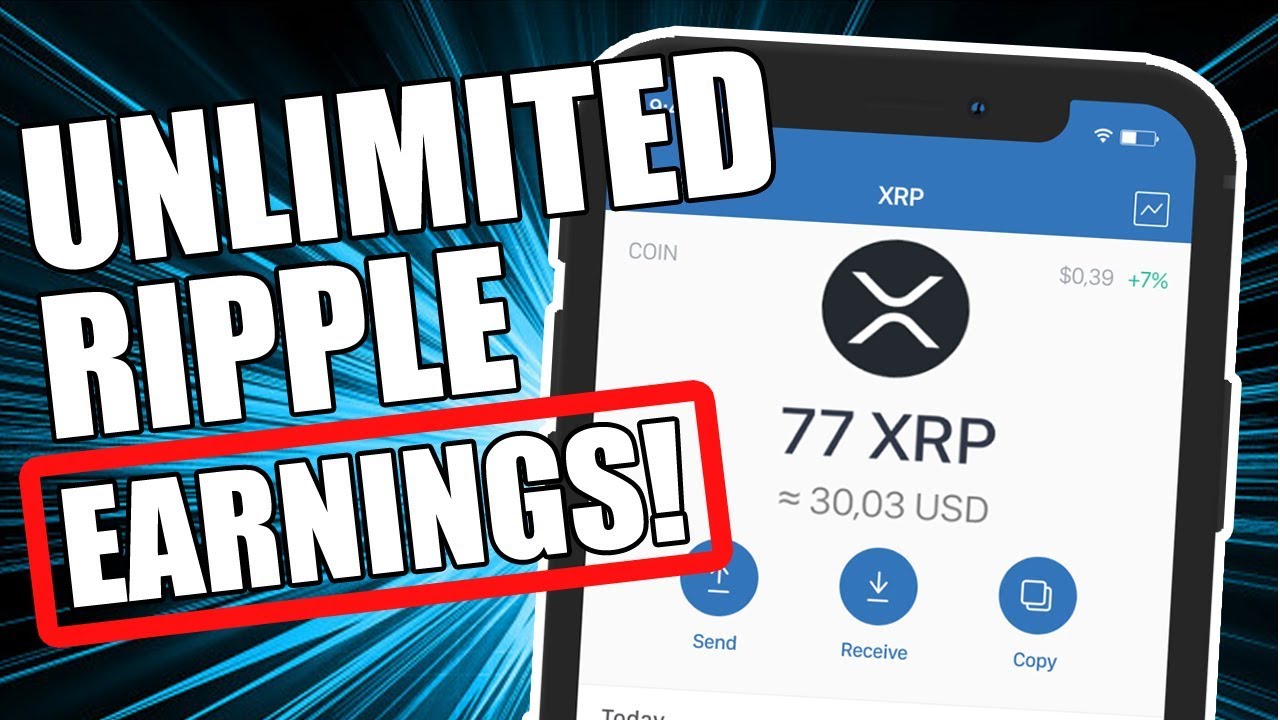What Is a Trading Node
A trading node is a crucial component in a network of interconnected systems that facilitate the exchange of financial assets such as stocks, bonds, commodities, and cryptocurrencies. It acts as a hub where market participants can connect and engage in buying and selling activities. In simpler terms, a trading node serves as a gateway for traders to access financial markets and execute their transactions.
The primary purpose of a trading node is to enable efficient and seamless trading by providing a platform for buyers and sellers to meet, interact, and execute transactions. It ensures that orders are routed to the appropriate marketplaces and facilitates the matching of buy and sell orders. Essentially, a trading node acts as a central point of coordination for the flow of trade data.
Trading nodes operate using advanced technologies and infrastructure, including high-speed internet connections and powerful computing systems. These enable traders to access real-time market data, execute trades swiftly, and capitalize on market opportunities. Additionally, trading nodes may employ algorithms to automate trading strategies, further enhancing efficiency and accuracy.
The benefits of trading nodes are numerous. Firstly, they provide market participants with access to a vast array of financial instruments and markets, increasing the opportunities for diversification and risk management. Traders can access multiple exchanges and liquidity pools through a single trading node, reducing the need for multiple connections and interfaces.
Moreover, trading nodes offer enhanced execution speeds, ensuring that trades are executed quickly and at the desired prices. This is particularly crucial in fast-paced markets where milliseconds can make a significant difference. The use of advanced technologies and proximity to exchange servers can minimize latency and optimize trade execution.
There are various types of trading nodes available, such as exchange-based trading nodes and broker-sponsored trading nodes. Exchange-based trading nodes are directly connected to the exchange’s order matching engines, providing direct access to market liquidity. On the other hand, broker-sponsored trading nodes are provided by brokerage firms to their clients, offering convenience and additional services.
When choosing a trading node, several factors need to be considered. These include the reliability and stability of the trading node provider, the availability of market data and connectivity options, the cost of accessing the trading node, and the range of markets and instruments offered. Traders should also assess the level of customer support and technical assistance provided by the trading node provider.
Setting up a trading node involves establishing connectivity to the desired markets, configuring trading software and platforms, and ensuring proper risk management practices. It requires collaboration with market data providers, exchanges, and technology vendors to ensure seamless integration and optimal performance.
In summary, a trading node plays a pivotal role in facilitating efficient trade execution and providing access to global financial markets. It serves as a central hub for market participants to connect and engage in buying and selling activities. By leveraging cutting-edge technologies and infrastructure, trading nodes enhance trading speed, accessibility, and convenience for traders.
Introduction
In today’s dynamic and interconnected financial landscape, trading has become increasingly reliant on advanced technology and sophisticated infrastructure. At the heart of this ecosystem lies a crucial component known as a trading node. This article aims to provide a comprehensive understanding of what a trading node is, its purpose, and how it functions in the world of financial markets.
A trading node serves as a gateway, connecting traders with financial markets and facilitating the exchange of various assets, including stocks, bonds, commodities, and cryptocurrencies. It acts as a central hub where market participants can meet, interact, and execute their trades, ensuring the smooth flow of buying and selling activities.
The main purpose of a trading node is to streamline the trading process by providing a platform where buyers and sellers can access market liquidity and execute their transactions efficiently. It acts as a coordination point, routing orders to the appropriate marketplaces and enabling the matching of buy and sell orders.
To effectively carry out its role, a trading node leverages advanced technologies and infrastructure. High-speed internet connections and powerful computing systems are utilized to ensure fast and reliable connectivity. Real-time market data feeds and trading algorithms may also be employed to enable traders to make informed decisions and execute trades swiftly.
Trading nodes offer several benefits to market participants. By providing access to a wide range of financial instruments and markets, they allow traders to diversify their portfolios and manage risks effectively. Additionally, trading nodes enhance execution speeds, ensuring that trades are executed at optimal prices and minimizing the impact of market volatility.
There are various types of trading nodes available in the market. Exchange-based trading nodes establish direct connections with the order matching engines of exchanges, offering traders direct access to market liquidity. On the other hand, broker-sponsored trading nodes are provided by brokerage firms to their clients, offering convenience and additional services.
When choosing a trading node, several factors need to be considered. These include the reliability and stability of the trading node provider, the availability of market data and connectivity options, the cost of accessing the trading node, and the range of markets and instruments offered. Traders should also assess the level of customer support and technical assistance provided by the trading node provider.
In the next sections, we will delve deeper into how trading nodes operate, the different types available, the factors to consider when choosing one, and the steps involved in setting up a trading node. By the end of this article, you will have a comprehensive understanding of the role and significance of trading nodes in the world of financial markets.
Definition and Purpose of a Trading Node
A trading node can be defined as a crucial component in a network of interconnected systems that facilitates the exchange of financial assets. It serves as a central hub where market participants can connect and engage in buying and selling activities. The primary purpose of a trading node is to enable efficient and seamless trading by providing a platform for buyers and sellers to meet, interact, and execute transactions.
Trading nodes play a vital role in the financial market ecosystem by serving as a gateway for traders to access various markets and execute their trades. They act as intermediaries between traders and exchanges, ensuring the smooth flow of trade data and order routing.
One of the key purposes of a trading node is to provide connectivity to marketplaces and liquidity pools. It allows traders to access a wide range of financial instruments and trade on multiple exchanges through a single interface. This eliminates the need for traders to maintain separate connections and interfaces for each exchange, streamlining their trading operations.
Furthermore, trading nodes enable the matching of buy and sell orders by routing them to the appropriate marketplaces. They ensure that orders are executed at the best possible prices, taking into account factors such as market liquidity and order priority.
A trading node also plays a crucial role in ensuring fast and efficient trade execution. By leveraging advanced technologies and infrastructure, such as high-speed internet connections and powerful computing systems, trading nodes enable traders to access real-time market data and execute trades swiftly. This is particularly important in fast-paced markets where every second counts.
In addition to facilitating trade execution, trading nodes also provide various value-added services. These can include risk management tools, order analytics, and real-time market monitoring. By offering these services, trading nodes empower traders to make informed decisions and manage their trading activities more effectively.
Overall, the purpose of a trading node is to enhance trading efficiency, accessibility, and convenience by providing a centralized platform for market participants to connect, communicate, and execute transactions. They enable traders to access global financial markets, diversify their portfolios, and capitalize on market opportunities.
In the next sections, we will explore how trading nodes work, the benefits they offer, the different types available, and the factors to consider when choosing a trading node. By understanding the definition and purpose of a trading node, you will gain valuable insights into its significance in the world of financial markets.
How Trading Nodes Work
Trading nodes operate as intricate systems that connect market participants and facilitate the exchange of financial assets. Understanding how trading nodes work is crucial in grasping their significance in the financial market ecosystem.
At the core of a trading node is a sophisticated infrastructure that handles the flow of trade data. When a trader submits an order, the trading node receives and processes the order information, including the desired asset, quantity, and price. The trading node then routes the order to the appropriate marketplace or liquidity pool where it can be executed.
To achieve efficient trade execution, trading nodes leverage high-speed networks and powerful computing systems. These technologies enable traders to access real-time market data and execute trades swiftly. The use of advanced algorithms further enhances the speed and accuracy of trade execution.
Market data plays a crucial role in trading nodes. It includes information such as bid and ask prices, trade volumes, and order book depths. Trading nodes receive market data from various sources, including exchanges, data vendors, and liquidity providers. This real-time data is essential for traders to make informed decisions when executing trades.
Trading nodes perform various functions to ensure seamless trading. They can execute multiple orders simultaneously, monitor market conditions, and manage risk through pre-trade risk checks. Trading nodes also provide functionalities such as order matching, trade reporting, and order book management.
Order routing is a critical aspect of trading nodes. When a trader submits an order, the trading node determines the most suitable marketplace or liquidity pool to route the order. This decision is based on factors such as the best available prices, order priority, and liquidity. By efficiently routing orders, trading nodes optimize trade execution for market participants.
Furthermore, trading nodes facilitate the matching of buy and sell orders. When a trading node receives a buy order and a corresponding sell order, it matches the orders based on the specified price and quantity. This matching process ensures that trades are executed at fair and accurate prices.
Trading nodes also play a role in post-trade processing. They handle tasks such as trade confirmation, settlement instructions, and clearing processes. By automating these post-trade activities, trading nodes help streamline the overall trading process and reduce operational risks.
Overall, trading nodes serve as the backbone of the trading ecosystem by efficiently processing and routing trade data. They leverage advanced technologies, market data, and algorithms to provide a seamless trading experience for market participants. By understanding how trading nodes work, traders can effectively utilize these systems to access global markets, execute trades swiftly, and capitalize on market opportunities.
Benefits of Trading Nodes
Trading nodes offer numerous benefits to market participants, making them essential components in the world of financial markets. By leveraging advanced technologies and providing efficient connectivity, trading nodes enhance trading efficiency, accessibility, and convenience.
One of the key advantages of trading nodes is the access they provide to a wide range of financial instruments and markets. Traders can connect to multiple exchanges and liquidity pools through a single trading node. This eliminates the need for maintaining separate connections and interfaces for each market, streamlining trading operations and saving valuable time and resources.
Trading nodes also offer enhanced execution speeds, which are crucial in today’s fast-paced markets. By leveraging cutting-edge technologies and powerful computing systems, trading nodes minimize latency and optimize trade execution. This ensures that trades are executed quickly and at the desired prices, enabling traders to capitalize on market opportunities swiftly.
Market liquidity is another significant advantage provided by trading nodes. By connecting to various liquidity sources, including exchanges and alternative trading systems, trading nodes offer market participants access to a deep pool of liquidity. This enhances the traders’ ability to enter and exit positions without impacting market prices significantly.
Moreover, trading nodes empower market participants with access to real-time market data. Traders can receive up-to-date information such as bid and ask prices, trade volumes, and order book depths. This data is crucial for making informed trading decisions and executing trades with precision.
Trading nodes also contribute to risk management. They provide traders with risk management tools and functionalities, such as pre-trade risk checks and position monitoring. By enabling traders to set risk parameters and monitor their exposures, trading nodes help mitigate potential risks and protect traders’ capital.
Convenience and flexibility are additional benefits offered by trading nodes. Traders can access their trading accounts and execute trades from anywhere with an internet connection. This allows for greater flexibility in managing trading activities and adapting to changing market conditions.
Furthermore, trading nodes often offer value-added services such as order analytics, algorithmic trading tools, and customizable trading interfaces. These additional features enhance traders’ capabilities and enable them to optimize their trading strategies.
Lastly, trading nodes provide a centralized platform for market participants to connect and interact. Traders can engage with others, share insights, and collaborate within the trading node’s community. This fosters a sense of community and facilitates knowledge sharing among traders.
In summary, trading nodes offer a wide range of benefits to market participants. They provide access to multiple markets and instruments, enhance trade execution speeds, offer market liquidity, provide real-time market data, facilitate risk management, and offer convenience and flexibility. By leveraging these advantages effectively, traders can maximize their trading potential and navigate the financial markets with confidence.
Types of Trading Nodes
There are different types of trading nodes available in the market, each catering to specific needs and preferences of market participants. Understanding the various types of trading nodes is crucial in choosing the one that aligns with individual trading goals and requirements.
1. Exchange-Based Trading Nodes: These trading nodes establish direct connections with the order matching engines of exchanges. They provide traders with direct access to market liquidity and order execution. Exchange-based trading nodes are often preferred by high-frequency traders and institutional investors who require fast and reliable connectivity to the underlying exchange infrastructure.
2. Broker-Sponsored Trading Nodes: These trading nodes are offered by brokerage firms to their clients as part of their trading services. They provide a convenient and user-friendly interface for traders to access multiple markets and execute trades. Broker-sponsored trading nodes offer additional services such as research and analysis tools, customer support, and integration with other brokerage systems.
3. Vendor-Specific Trading Nodes: Certain technology vendors cater to the specific needs of traders by offering proprietary trading nodes. These nodes are typically part of a broader trading platform or software suite provided by the vendor. Vendor-specific trading nodes often come with advanced features, customization options, and innovative trading tools tailored to specific trading strategies or asset classes.
4. Peer-to-Peer Trading Nodes: Peer-to-peer trading nodes operate on decentralized networks and facilitate direct trading between individuals without the need for intermediaries. These nodes enable direct communication and transaction execution between buyers and sellers. Peer-to-peer trading nodes are commonly used in cryptocurrency markets, where traders can exchange digital assets directly without relying on centralized exchanges.
5. Dark Pool Trading Nodes: Dark pool trading nodes provide a platform for executing large block trades away from the public order books. They allow traders to trade large volumes discreetly, minimizing market impact and maintaining transaction confidentiality. Dark pool trading nodes are often used by institutional investors who require anonymity and seek to execute trades without affecting market prices.
6. Hybrid Trading Nodes: Hybrid trading nodes combine features from multiple types of trading nodes, offering a flexible and comprehensive trading experience. They integrate functionalities of exchange-based trading nodes, broker-sponsored trading nodes, and vendor-specific trading nodes into a single platform. Hybrid trading nodes cater to a wide range of trading needs and are suitable for diverse market participants.
When choosing a trading node, it’s essential to assess individual trading requirements, such as the desired markets, trading strategies, connectivity needs, and additional services provided. Traders should consider factors such as connectivity reliability, speed, availability of market data, customization options, and customer support when evaluating different types of trading nodes.
Ultimately, the choice of trading node depends on individual preferences, trading goals, and the desired trading experience. Exploring the different types of trading nodes available in the market is crucial in finding the one that best suits one’s needs as a market participant.
Factors to Consider When Choosing a Trading Node
When selecting a trading node, it is important to consider several factors to ensure that it aligns with your trading goals and requirements. By evaluating these factors, you can choose a trading node that provides the necessary functionalities, connectivity options, and support for an optimal trading experience.
1. Reliability and Stability: Choose a trading node from a reputable provider that offers a reliable and stable platform. The trading node should have a track record of uptime and minimal disruptions. Look for reviews and feedback from other traders to assess the provider’s reliability and stability.
2. Connectivity and Access: Consider the connectivity options offered by the trading node. Ensure that it provides direct and efficient access to the desired markets and liquidity sources. The trading node should have low latency connections and offer reliable access to market data feeds for real-time information.
3. Market Data: Assess the availability and quality of market data provided by the trading node. Real-time and accurate market data is crucial for making informed trading decisions. Look for a trading node that offers comprehensive market data, including bid and ask prices, trade volumes, and order book depths.
4. Cost and Fees: Evaluate the cost structure and fees associated with using the trading node. Consider both subscription fees and transaction costs. It is important to strike a balance between the cost and the value-added services provided by the trading node. Compare the pricing models of different trading nodes to make an informed decision.
5. Range of Markets and Instruments: Determine the range of markets and financial instruments offered by the trading node. Ensure that it provides access to the specific markets and asset classes that you intend to trade. Consider whether the trading node offers access to global exchanges or alternative trading venues.
6. Customer Support and Technical Assistance: Consider the level of customer support and technical assistance provided by the trading node provider. Quick and reliable support is crucial, especially during times of technical issues or trading disruptions. Look for a provider that offers timely and responsive customer support channels.
7. Customization and Flexibility: Assess the customization options and flexibility provided by the trading node. Look for a platform that allows you to tailor the trading interface and functionality to your preferences and trading strategies. Consider whether the trading node supports third-party integrations or the ability to develop custom trading algorithms.
8. Security Measures: Consider the security measures implemented by the trading node provider to protect your trading activities and personal information. Look for robust encryption protocols, secure access controls, and measures to safeguard against hacking and data breaches.
9. User Experience: Evaluate the user interface and overall user experience provided by the trading node. A user-friendly and intuitive interface can enhance your trading efficiency and minimize the learning curve. Consider whether the trading node offers mobile applications for trading on the go.
10. Compliance and Regulatory Considerations: Ensure that the trading node provider adheres to applicable regulations and compliance standards. Consider whether the provider has robust compliance measures in place to protect your trading activities and ensure adherence to regulatory requirements.
By considering these factors, you can make an informed decision when choosing a trading node that meets your specific trading requirements. Always take the time to research and compare different trading nodes before making a final decision, as this choice can significantly impact your overall trading experience.
Setting Up a Trading Node
Setting up a trading node involves several steps to ensure seamless connectivity and optimal performance. By following a systematic approach, you can establish a robust trading node that enables efficient trade execution and access to global financial markets.
1. Identify Trading Requirements: Determine your trading requirements, including the desired markets, asset classes, and trading strategies. This will help you choose a trading node that aligns with your specific needs.
2. Select a Trading Node Provider: Research and select a reputable trading node provider that offers the functionalities and connectivity options you require. Consider factors such as reliability, market data availability, cost, and customer support.
3. Establish Connectivity: Establish a reliable and fast internet connection to ensure seamless connectivity to the trading node provider. Consider using a dedicated internet connection or a virtual private network (VPN) for enhanced security and stability.
4. Configure Trading Software: Install and configure the trading software provided by the trading node provider. This includes setting up the user interface, preferences, and any additional functionalities or integrations required for your trading activities.
5. Access Market Data: Set up access to real-time market data feeds provided by the trading node. Depending on the trading node provider, this may involve subscribing to market data services and configuring data connections to receive the necessary information.
6. Test Connectivity and Performance: Conduct thorough testing to ensure that the trading node is connected properly and performing optimally. Test trade execution, market data access, and any other functionalities offered by the trading node provider.
7. Establish Risk Management Practices: Implement risk management practices within your trading node setup. This may include setting up pre-trade risk checks, defining risk parameters, and employing risk monitoring tools to manage and mitigate potential trading risks.
8. Maintain Security Measures: Implement robust security measures to protect your trading activities and personal information. This includes using strong passwords, activating two-factor authentication, and keeping software and antivirus programs up to date.
9. Stay Informed and Updated: Regularly monitor market developments, software upgrades, and any changes from the trading node provider. Stay informed about regulatory requirements and comply with any necessary updates or changes in order to ensure uninterrupted trading.
10. Seek Ongoing Support: Establish a relationship with the trading node provider’s customer support team. This will allow you to seek assistance, address any technical issues, and stay updated on any system updates or enhancements provided by the trading node provider.
Setting up a trading node can be a complex process, requiring technical knowledge and attention to detail. It is essential to carefully follow the instructions provided by the trading node provider and seek their support whenever necessary. By properly setting up and maintaining your trading node, you can maximize its performance and harness its benefits for your trading activities.
Conclusion
In conclusion, trading nodes play a vital role in the world of financial markets by facilitating efficient trade execution and providing access to global markets. These interconnected systems serve as gateways for market participants to connect, interact, and execute transactions. By leveraging advanced technologies, trading nodes offer a range of benefits, including access to diverse markets, enhanced execution speeds, market liquidity, real-time market data, risk management tools, and convenience.
When choosing a trading node, it is important to consider factors such as reliability, connectivity, market data availability, cost, customer support, customization options, and security. By carefully assessing these factors, traders can select a trading node that best aligns with their trading goals and requirements.
Setting up a trading node involves a systematic approach, including identifying trading requirements, selecting a reputable provider, establishing connectivity, configuring trading software, accessing market data, testing performance, implementing risk management practices, maintaining security measures, and staying informed and updated.
By effectively setting up and maintaining a trading node, traders can gain a competitive edge, access global markets, execute trades swiftly, and capitalize on market opportunities. Trading nodes empower market participants to navigate the financial markets with efficiency, achieve diversification in their portfolios, and execute trades with precision.
It is worth noting that the trading landscape is constantly evolving, with advancements in technology and regulatory changes introducing new opportunities and challenges. Traders should stay informed about industry developments and adapt their trading nodes and strategies accordingly. Regularly assessing the performance and functionality of the trading node, as well as seeking ongoing support from the provider, can help traders navigate these changes effectively.
In summary, trading nodes are essential components in the financial market ecosystem. By providing seamless connectivity, access to global markets, and efficient trade execution, trading nodes empower market participants to maximize their trading potential. By understanding the functions, benefits, types, factors to consider when choosing, and the process of setting up a trading node, traders can make informed decisions and optimize their trading activities.

























